The Life Cycle of the Dungeness Crab
While the emphasis for our whale and wildlife tours is to seek out the giants of the Salish Sea, the smaller organisms that make up the foundation of our blue kingdom cannot be overlooked! One of the most important of these organisms that is common and often goes unnoticed is the Dungeness Crab.
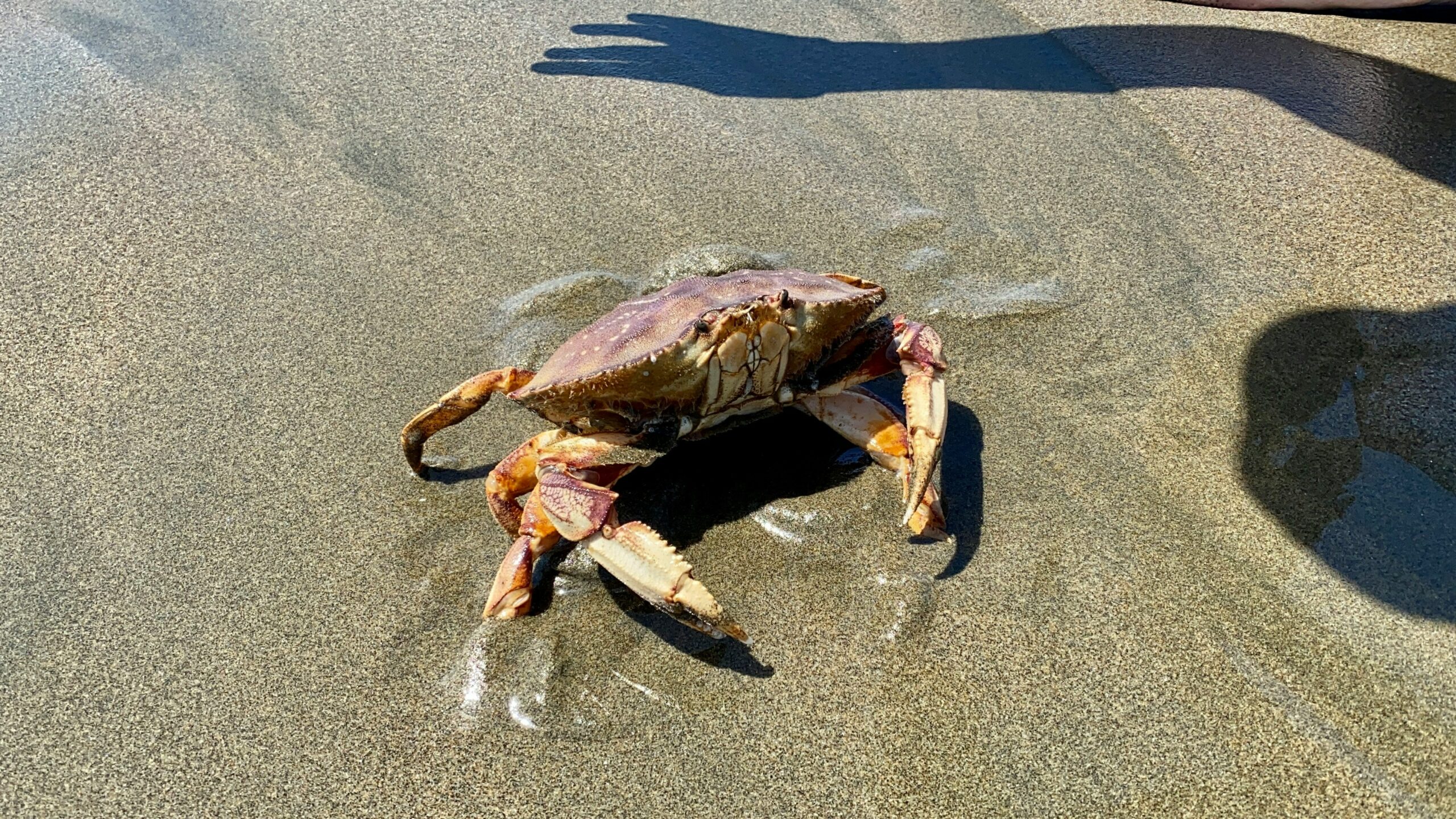 Photo by Jim Petkiewicz on Unsplash
Photo by Jim Petkiewicz on Unsplash
Larval Stage
Often times, when we take a glimpse overboard and refocus our eyes into the water, a myriad of smaller ocean organisms come to light. The small jellyfish that undulate are actively feeding on even smaller plankton not obvious to the naked eye. During the months of June through August, the waters are swarming with crab larvae in their final development stage called megalopae. The Megalopal stage is the largest and final planktonic stage of the Dungeness crab before it molts into a full fledged crab and settles out on the sea floor. The largest of the megalopae would be that of the Dungeness crab and is easily seen with the naked eye. Boxy in shape with two large eyes forward and an abdomen more like a shrimp, these larvae swarm by the billions and billions in the waters of the Salish Sea. The average Dungeness crab female typically bears over a million eggs that hatch into a zoeal planktonic form. The survival strategy of a crab is to saturate the system with young so that only few need to survive. The planktonic stages of crab consist of 5 zoeal and one megalopal stage. The zoeal stage looks more shrimp like, than crab like. They can be seen with the unaided eye but are small enough that you are likely not to notice. They swim in a jerky backwards motion creating a back eddy in front of their mouths where either zooplankton or phytoplankton accumulate. Simply put, the zooplankton are small animals that feed on other zooplankton or phytoplankton. Phytoplankton are essential plants that use the sun and chlorophyll to produce energy for their growth. With a hard exoskeleton, crabs grow by undergoing the processes of molting. A new larger soft body grows underneath the hard outer shell. When the crab molts it sheds its outer old shell and a soft new shell emerges. For the plankton stages this hardens up quickly, but for juvenile and adult crabs, it could take a few days or weeks.
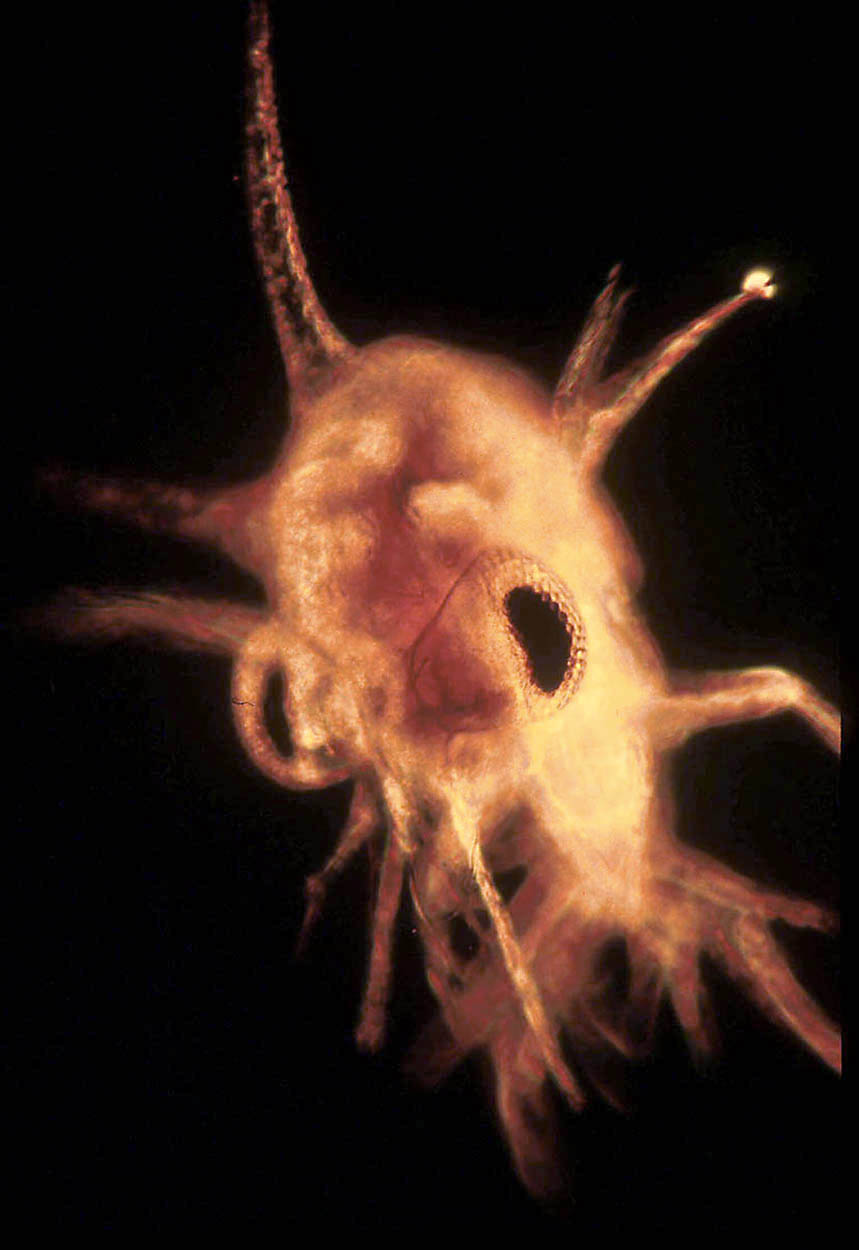
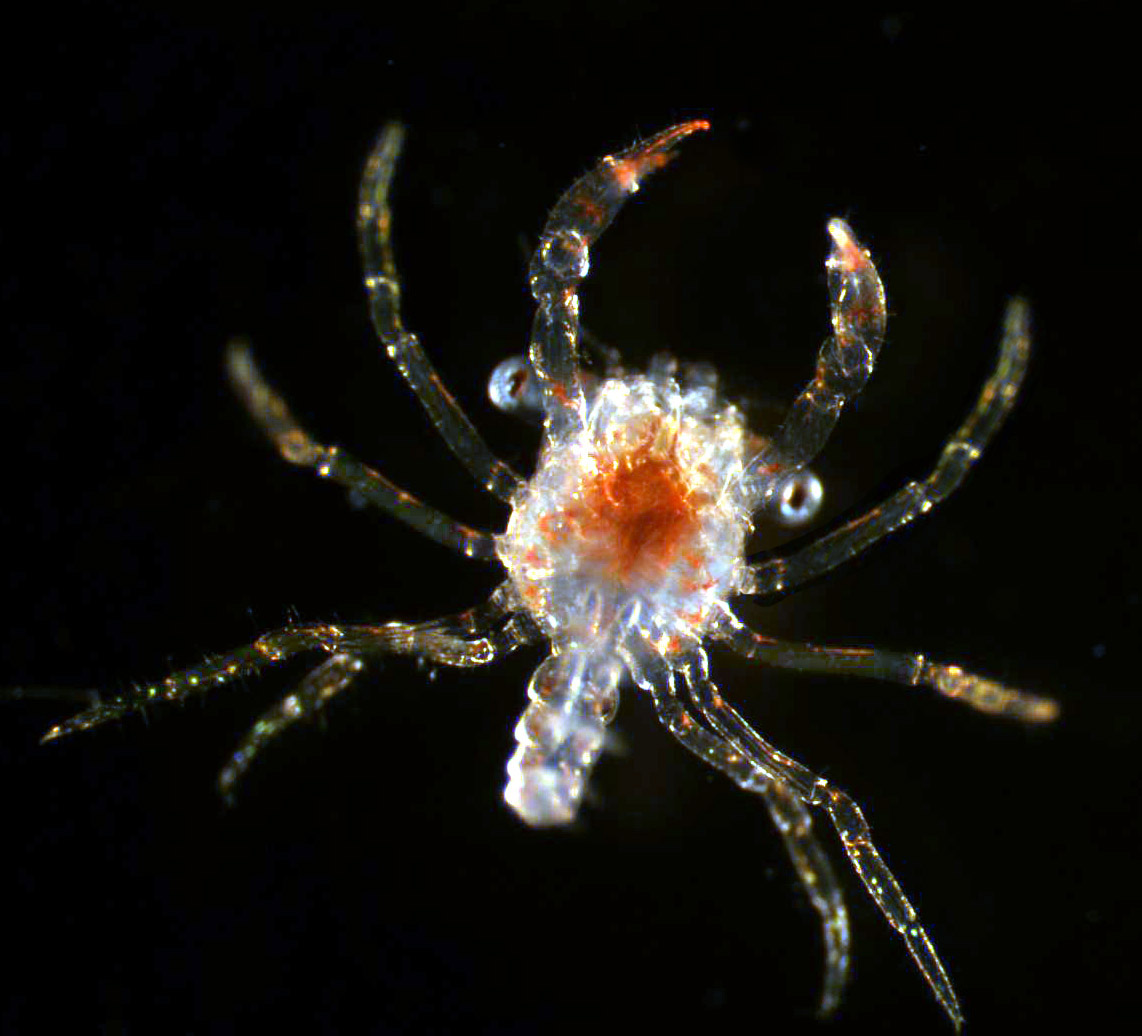
Ecologically Significant
The planktonic stages of Dungeness crab’s are relatively short, because they become a food source for many critters in the Salish Sea. Spring to summer is the high time for planktonic abundance, as it is the best time of year to eat and grow. The bellies of salmon are filled with crab larvae and while not their main food source, it’s definitely a good passive way to pick up few “croutons of the sea.” The Larvae have a natural response to swim up in the water column, in order to keep themselves near the surface. This also keeps them in the planktonic zone to feed on plankton themselves. One thing you can always count on in the blue kingdom is that someone is always chasing after someone else in order to survive. After about 30 days in the final planktonic megalopal stage they settle out in the shallows in the estuary areas of the Salish Sea.
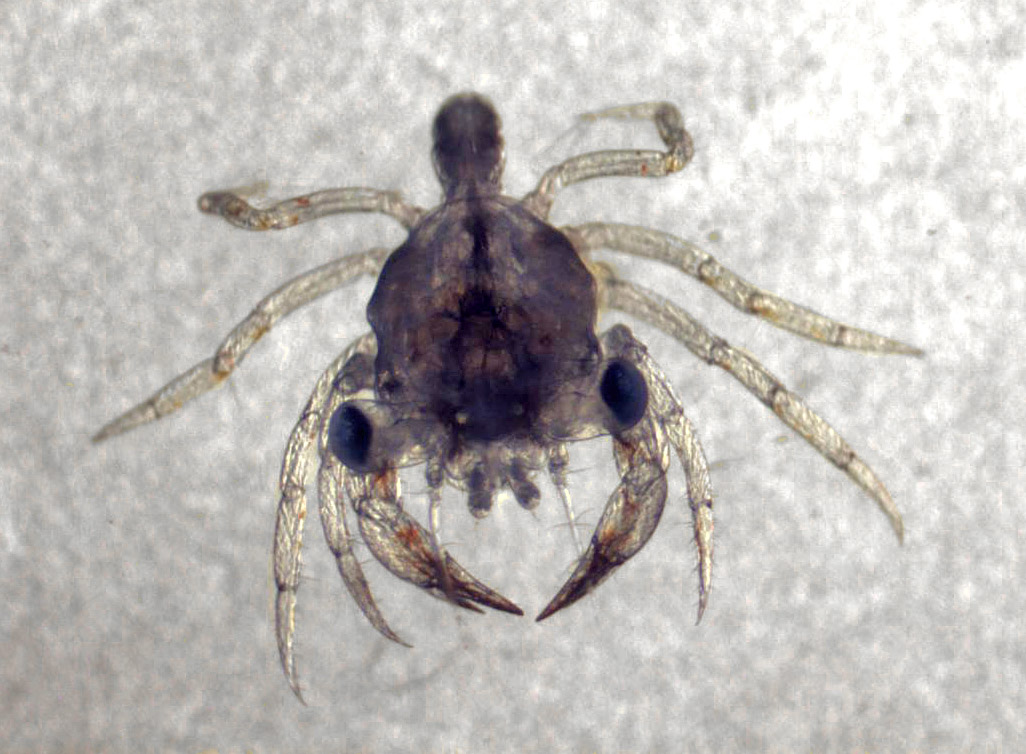
Juvenile Stage
As juvenile crabs, they go through a more rapid molting process before becoming adults. During this stage, they actively feed on just about anything they can find. You can find them on the bottom intertidally among the shells and rocks littered at the beach. They overlap with many other crab species so competition for resources is stiff. They can be distinguished from other crabs at this stage by various body markings. Once they become adults they molt about once a year. Females tend to grow slower than males. They become table fare for humans after about four years.
Adult Stage
The adult stage of the Dungeness crab is fairly well known to everyone as they have a very high commercial value. Harvest is managed in order to not overharvest this important species. Males and females are easily distinguished by the size of their abdominal plates which are broader in females than males. Adult male crabs are harvested by humans following local regulations for sizes and time of year where most of the populations have gone through their annual molt. Mating begins in spring just after the molt. Females extrude eggs onto their external bodies, attaching them to their pleopods. If you have ever been out at night in the months of November through January, you might have seen a crab with an orange spongy ball under its abdominal plate. These are the eggs that will hatch by the millions in the late winter. This is a vulnerable time for the females, so they tend to bury themselves in the sea floor to protect the eggs until they are ready to hatch. Eel grass is the preferred habitat for Dungeness females. After the hatch, during the months of February through April, the female goes through a molt and mating begins again. It is not uncommon to see large males carrying their mates cradled in their legs at this time of the year.
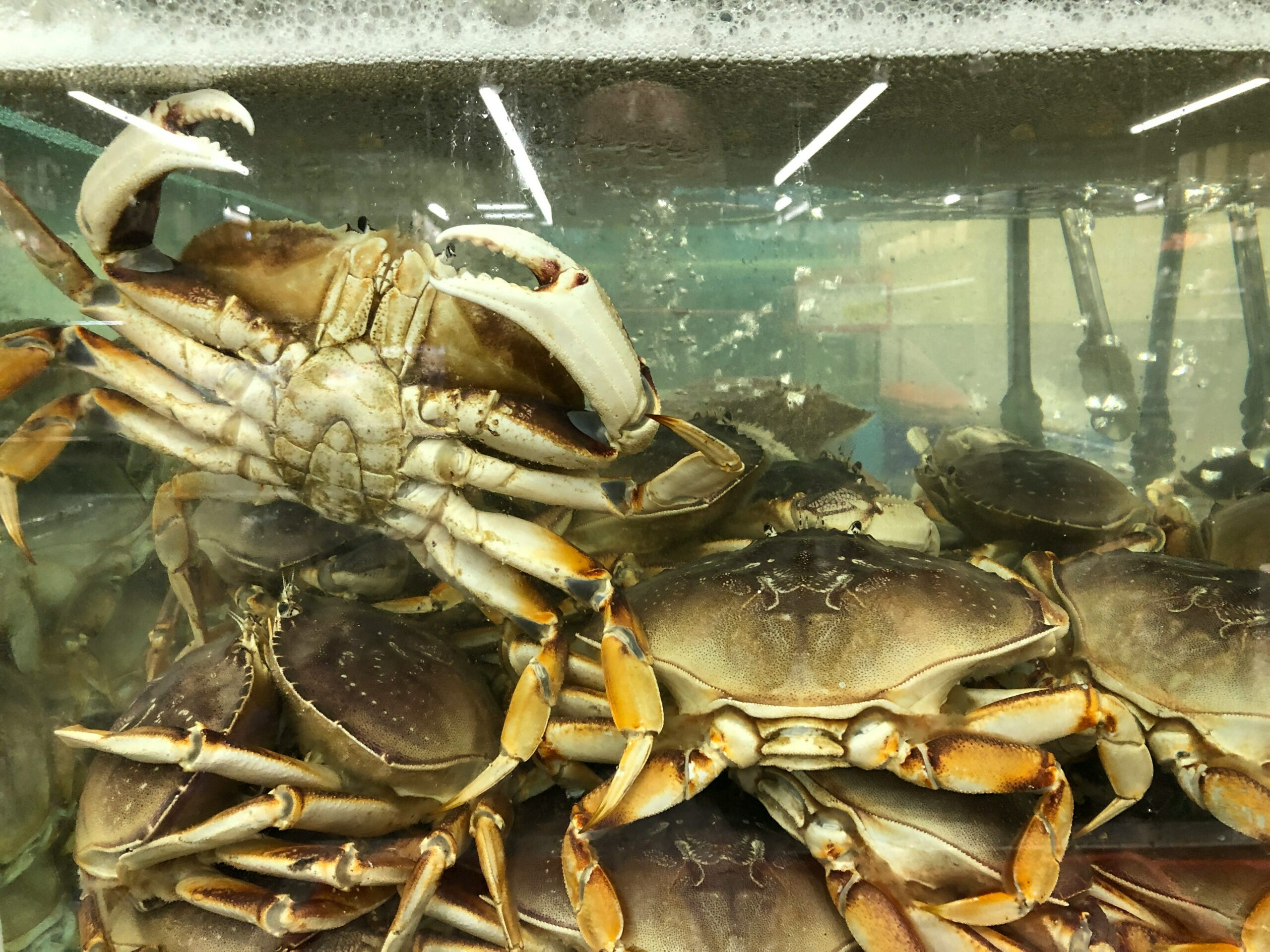
Photo by Claude Potts on Unsplash
Summary
So the next time you’re out making your discoveries in the Blue Kingdom, sneak a peek at some of the smaller critters of the Salish Sea. Appreciate the planktonic building blocks of the larger ocean system. This habitat is home to the vast array of organisms large and small.
See ya on the water!

